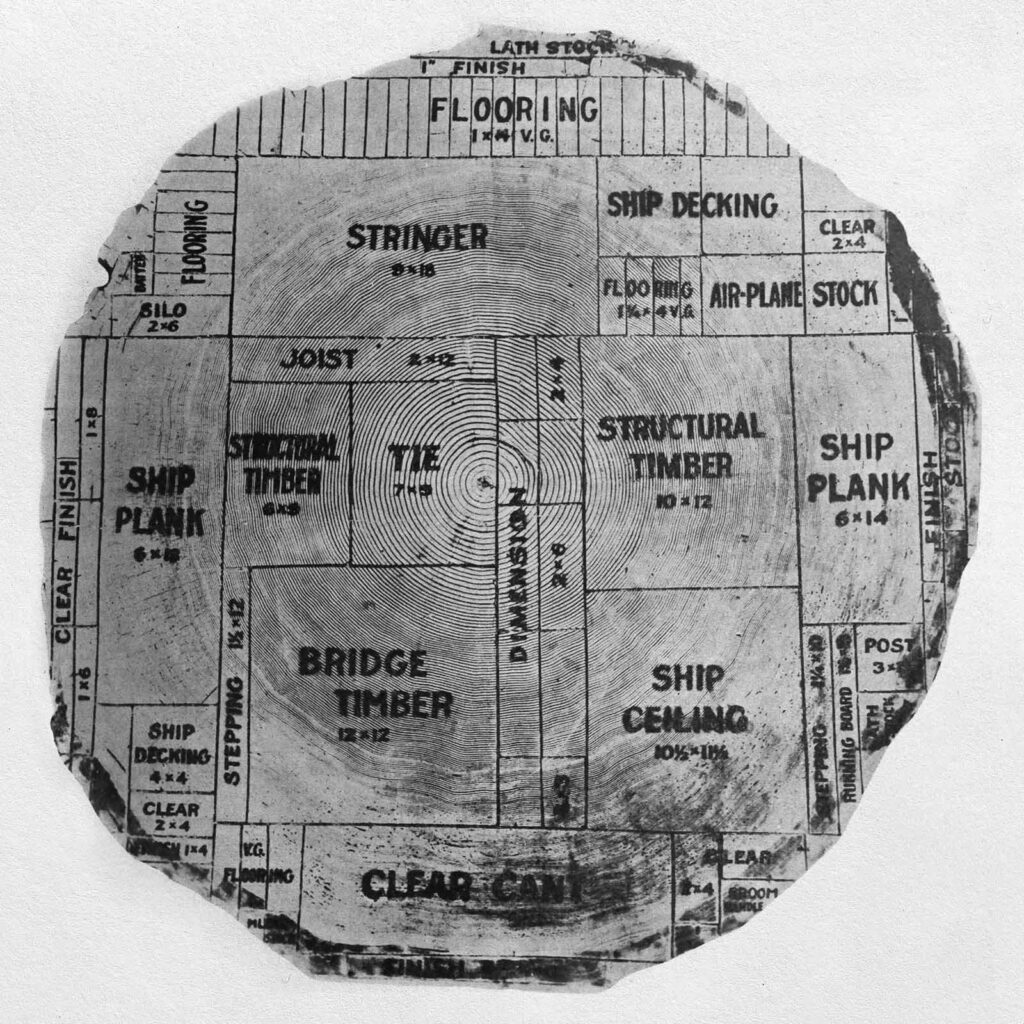The Kinds of Material that Come Out of Giant Douglas Fir Log (1920)
Originally published in:
Canada Lumberman & Woodworker – December 1, 1920

The illustration shown is from a photograph of a cross-section of a Douglas Fir log. This section was displayed at a recently held Railway Appliance exhibit in Chicago by the West Coast Lumbermen’s Association of Oregon and Washington and created a great deal of interest, not only on account of the unique nature of the exhibit, but also of its educational value. Few, although familiar with the manufactured products, scarcely conceived that timber grew in such quality and size as to secure the various grades’ and class of lumber from a single log.
This was secured by taking a section of the log, it being about 48 inches in diameter, and bandsawing the same into the various pieces as marked. The whole was reassembled and shows how the log would be graded and sawn in the usual process of manufacturing in the regular way.
It is interesting to note the product of the log and from which portion of same, the various grades and kinds of lumber are obtained. It will be observed: that securing almost every class of material is the result of proper grading and saving the log by experienced sawers and others.
Starting with the slab, this stock is sorted as to quality and size, some going into ordinary fuel, the desirable and suitable being passed on to the lath mill. After “slabbing” (as it is termed) one or more sides, we come to the “clear,” used for “finish,” such as casing and base; then a four or six-inch cant to be resawn by a gang saw or other appliances in siding’ and flooring strips, the latter usually “turned down” and producing vertical grain lumber and in some cases, ten and twelve inches thick for high-grade vertical grain stepping.
Proceeding further with the cut by constant turning of the log and approaching the heart, the “select” and “merchantable” grades of ship-barge and car materials are obtained. Between the remaining section of the log and the heart are secured structural and bridge timbers, heavy joists and to the smaller sized dimension, boards are in the common grades.
While, of course, the large log illustrated was selected for the purpose, all logs will not produce such results. A considerable percentage of the fir growing in British Columbia, and in the Pacific Coast will however, do so.
The smaller second-growth fir is converted into ties, timber dimension, etc. In some instances when the growth warrants, on account of its nature and strength, it makes the most desirable car decking-car sills, and other car framing material, though of a coarser grain.
Sources
Thomas Fischer Rare Book Library, University of Toronto
1. Canada Lumberman & Woodworker: Vol. 40, No. 23 – December 1, 1920
